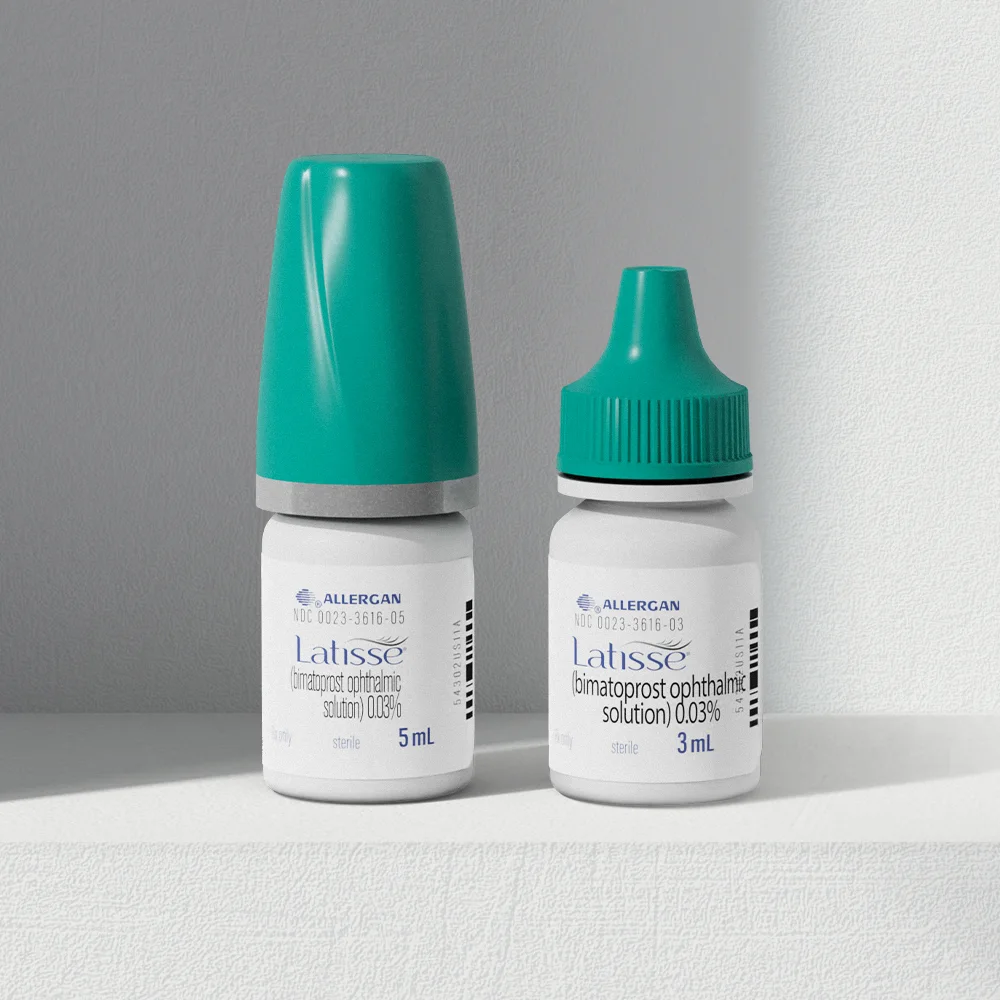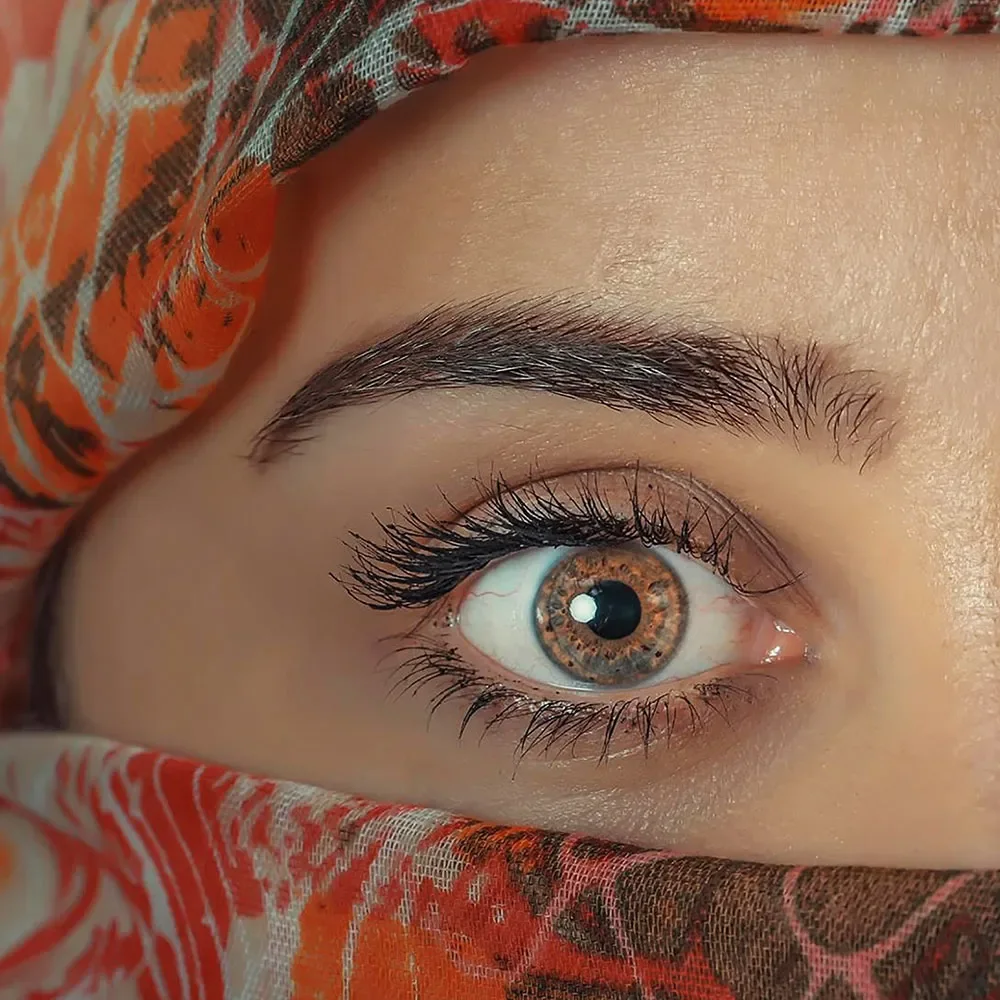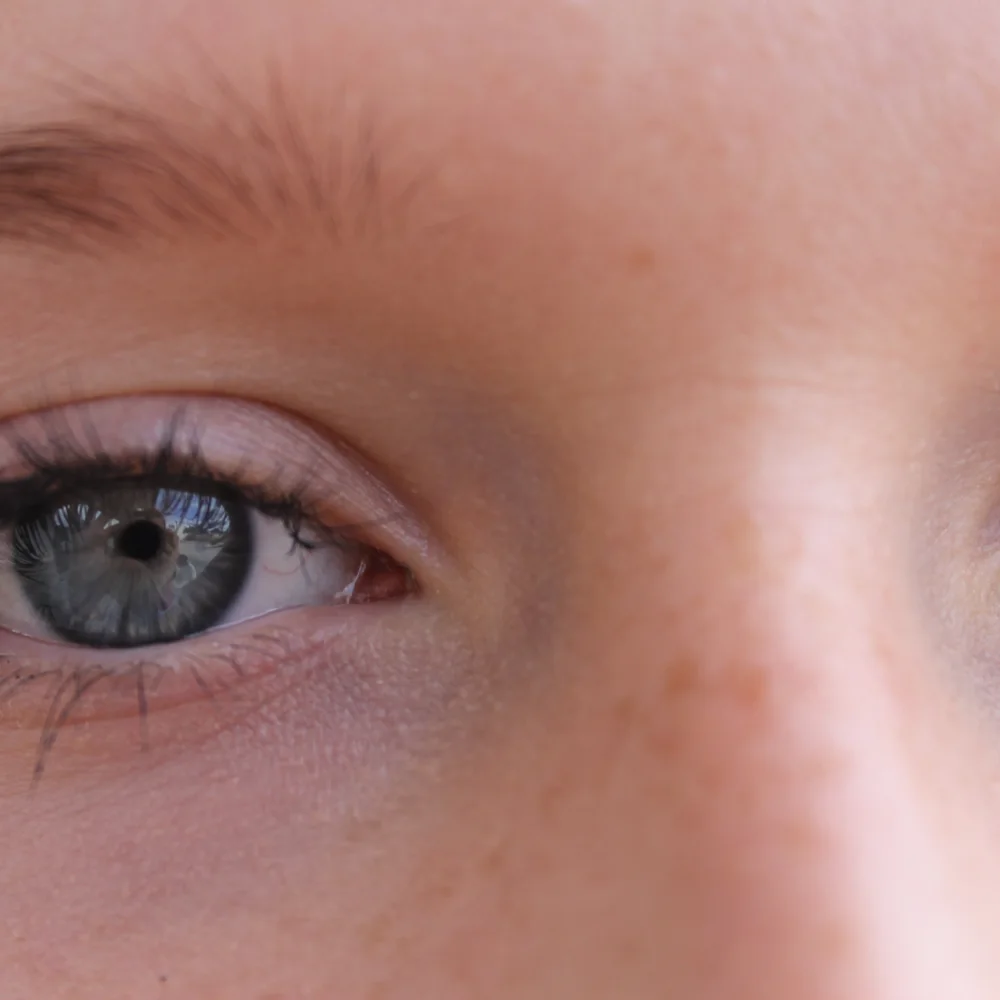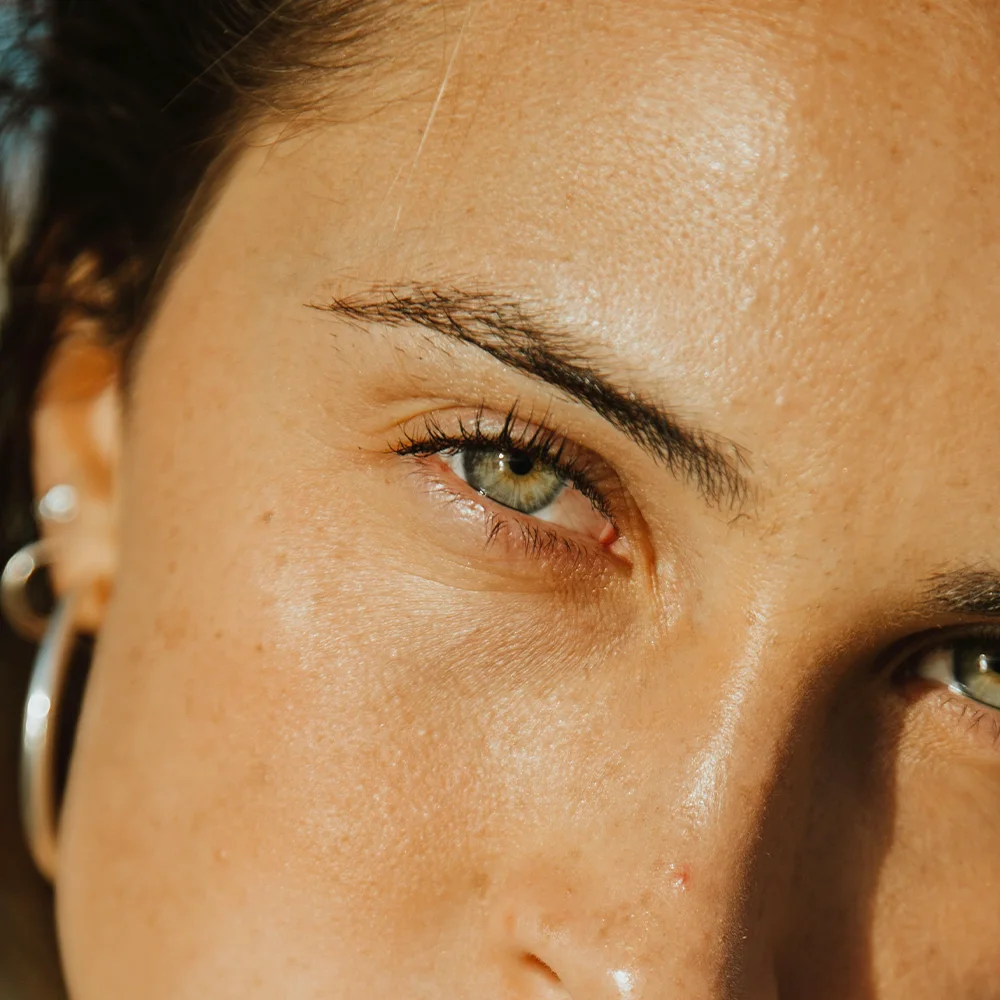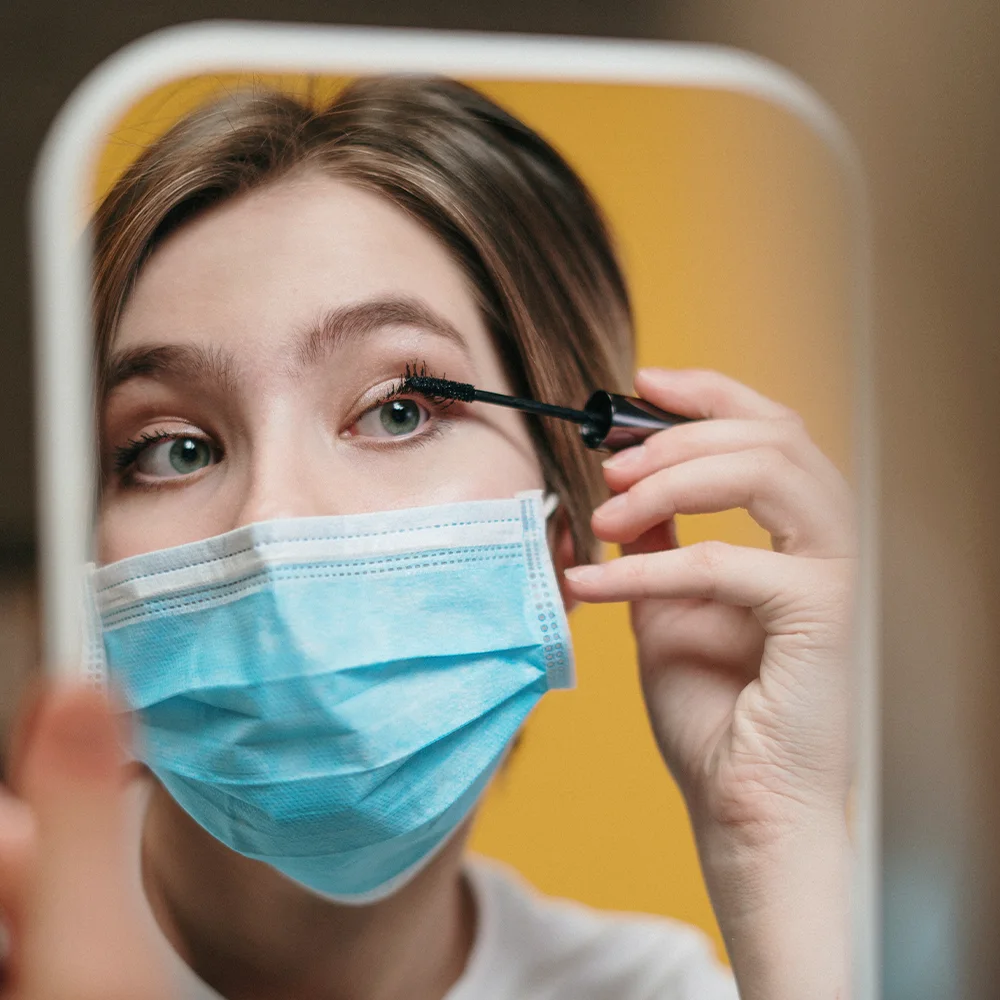Here's what we'll cover
Here's what we'll cover
Whether you have thin, high arches or thick, fluffy brows, the size and shape of your eyebrows can greatly impact the appearance of your face. A change in your eyebrows can dramatically change your overall look. That’s probably why more than 80 million people in the United States used eyebrow pencils in 2020 to enhance and thicken their brows.
If you’ve noticed that your eyebrows have thinned out or are missing patches, studies show Latisse can cause significant eyebrow hair growth with few side effects.
Latisse Important Safety Information: Read more about serious warnings and safety info.
What is Latisse?
Latisse (0.03% bimatoprost ophthalmic solution) is a prescription-only eye drop originally developed to treat glaucoma. Ophthalmologists noticed that people who used the eye drops often grew longer and more luxurious lashes. The U.S. Food and Drug Administration (FDA) approved Latisse for use on the upper eyelids for sparse eyelashes in 2008.
While there isn’t FDA approval for Latisse to regrow eyebrows, studies say it may help grow thicker and fuller brows. Some healthcare professionals and dermatologists use Latisse off-label for eyebrow growth.
Does Latisse work on eyebrows?
Does Latisse for eyebrows work? The short answer is yes. However, the exact mechanism of how bimatoprost (the active ingredient in Latisse) works to grow hair has yet to be discovered. One theory is that bimatoprost helps keep more of your hair follicles in a growth phase and simultaneously stimulates hair follicles in the resting state to shift to the growth phase.
While there’s much more research on how Latisse works for lengthening eyelashes, there are a few small clinical studies on how well it works for eyebrows.
One study measured the effects of 0.03% bimatoprost for 20 people over nine months. This double-blind study showed significant changes in eyebrow hair growth with almost no side effects.
A second study looked at using Latisse for a shorter period. Here, 10 women used Latisse on one eyebrow for six weeks. All of the participants showed eyebrow growth in the Latisse eyebrow. Once the six weeks were up, all the participants used Latisse on their other eyebrows to even out their look. No adverse effects were reported by any of the participants.
A double-blind study looked at how Latisse worked for eyebrow loss in 357 people over seven months. Some study participants received bimatoprost ophthalmic solution once a day, others twice per day, and others a placebo. At the end of the second month, it was apparent how well Latisse worked for eyebrows. While the overall goal was thicker brows, researchers also noted fullness, darkness, and participant satisfaction with Latisse. There were very few side effects reported.
A more recent study looked at using a lower dose of bimatoprost. Here, 40 participants used 0.01% bimatoprost solution on their eyebrows for six months. There was significant eyebrow hair growth and very few side effects. Researchers concluded that this treatment works well for sparse eyebrows.
How do you apply Latisse for eyebrows?
Applying Latisse to your eyebrows is simple. Apply Latisse on your eyebrows at bedtime after doing your nightly skincare routine.
Latisse comes in a small bottle that looks like an eye drop container. You squeeze a drop onto the provided Latisse applicator. Apply Latisse to your eyebrows using a combing and sweeping motion. Alternate brushing on your brow hairs to make sure you give them equal amounts of Latisse.
Risks and side effects of Latisse for eyebrows
The most common side effects of Latisse occur in and around the eyes. While side effects occur in less than 4% of the people who use Latisse, you may experience the following:
Itching
Redness or visible blood vessels
Latisse side effects differ when used on the eyebrows. In studies on Latisse for eyebrows, no skin darkening, eye itching, or eye redness was noted compared to Latisse for eyelashes. In one of the more extensive studies, the most common side effects of Latisse for eyebrows were:
Runny nose
Sinusitis
Skin itching
Upper respiratory tract infection
Urinary tract infection
Researchers couldn’t determine if these side effects were directly caused by using Latisse or other factors. Nevertheless, all the research studies and a literature review of Latisse for eyebrows suggest that Latisse is safe to use for eyebrow hair growth when you follow the directions.
How long should you use Latisse for eyebrows?
According to the few studies available, using Latisse for seven to nine months increases eyebrow fullness. As long as you continue to use it, you should be able to maintain eyebrow thickness. If you miss or skip an application, don’t double up. Continual use gives thicker and longer brows.
Possible causes for thinning eyebrows
These results of Latisse for eyebrows are enticing, especially if you’re suffering from eyebrow hair loss. However, you may need to speak to a healthcare professional to see if there are any underlying causes for your eyebrow hair loss, as there may be more effective ways to stop the loss and prevent it from returning.
Several conditions cause eyebrow hair loss, including damage to the eyebrows from over-tweezing, chemical burns, or skin issues. Some people have autoimmune disorders like alopecia areata or nutritional deficiencies like missing iron, zinc, or biotin (a B vitamin). Others may have endocrine or thyroid disorders that cause hair loss. Those will need to be addressed before or after starting Latisse therapy..
Latisse could be an effective way to help you regrow your brows. However, you may have a condition that causes your eyebrow hair loss. Make an appointment with your healthcare professional to determine if Latisse is a suitable choice for you.
DISCLAIMER
If you have any medical questions or concerns, please talk to your healthcare provider. The articles on Health Guide are underpinned by peer-reviewed research and information drawn from medical societies and governmental agencies. However, they are not a substitute for professional medical advice, diagnosis, or treatment.
Allergan. (2012). Latisse package insert. Retrieved from https://www.accessdata.fda.gov/drugsatfda_docs/label/2012/022369s005lbl.pdf
Beer, K. R., Julius, H., Dunn, M., & Wilson, F. (2013). Treatment of eyebrow hypotrichosis using bimatoprost: a randomized, double-blind, vehicle-controlled pilot study. Dermatologic Surgery: Official Publication for American Society for Dermatologic Surgery, 39 (7), 1079-1087. doi: 10.1111/dsu.12199. Retrieved from https://pubmed.ncbi.nlm.nih.gov/23617229/
Carruthers, J., Beer, K., Carruthers, A., et al. (2016). Bimatoprost 0.03% for the treatment of eyebrow hypotrichosis. Dermatologic Surgery: Official Publication for American Society for Dermatologic Surgery, 42 (5), 608–617. doi: 10.1097/DSS.0000000000000755. Retrieved from https://www.ncbi.nlm.nih.gov/pmc/articles/PMC5414776/
Chanasumon, N., Sriphojanart, T., & Suchonwanit, P. (2018). Therapeutic potential of bimatoprost for the treatment of eyebrow hypotrichosis. Drug Design, Development and Therapy , 12 , 365. doi: 10.2147/DDDT.S156467. Retrieved from https://pubmed.ncbi.nlm.nih.gov/29503529/
Statista. (2021). US: usage of eyebrow pencils. Retrieved from https://www.statista.com/statistics/275675/us-households-usage-of-eye-brow-pencils/
Vergilis-Kalner, I. J. (2014). Application of bimatoprost ophthalmic solution 0.03% for the treatment of eyebrow hypotrichosis: series of ten cases. Dermatology Online Journal , 20 (6). doi: 10.5070/D3206022868. Retrieved from https://escholarship.org/uc/item/1mc5v5mx
US Food and Drug Administration (FDA). (2008). Drug approval package. Latisse (bimatoprost ophthalmic solution), 0.03%. Retrieved from https://www.accessdata.fda.gov/drugsatfda_docs/nda/2008/022369_latisse_toc.cfm
US Food and Drug Administration (FDA). (n.d.). Understanding unapproved use approved drugs. Retrieved from https://www.fda.gov/patients/learn-about-expanded-access-and-other-treatment-options/understanding-unapproved-use-approved-drugs-label
